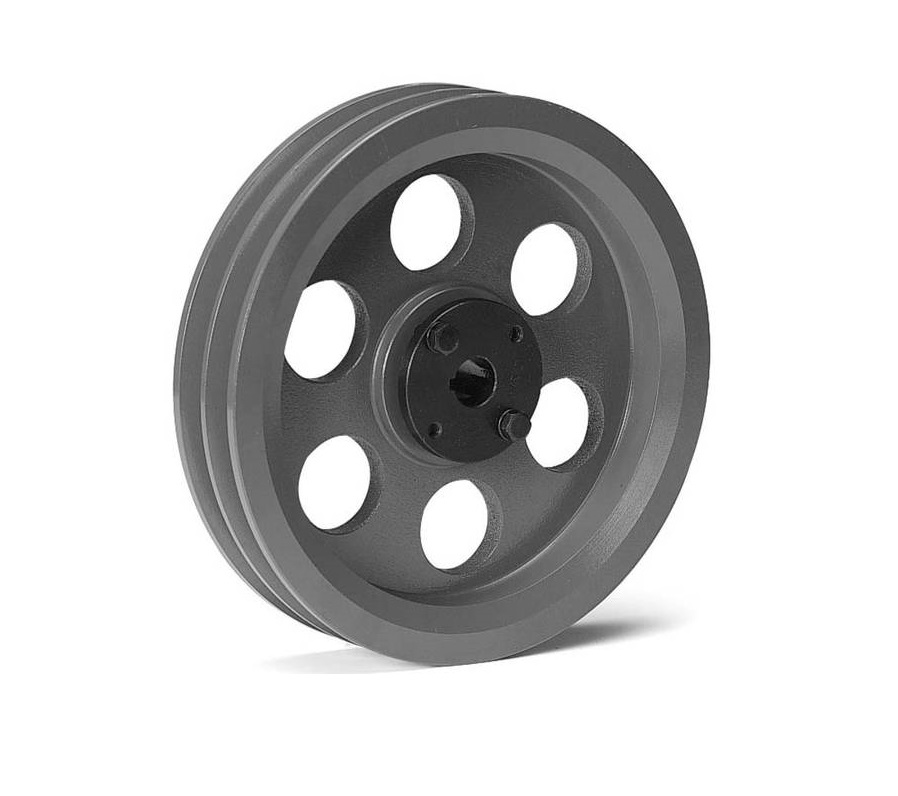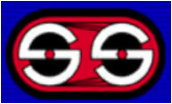
Industrial Sheaves and Pulleys
A sheave/Pulley is a grooved wheel used for holding a belt or wire rope. The product allows the wire or rope to move freely, minimizing friction and wear on the cable. They can be used to redirect a cable or rope, lift loads, and transmit power.
Sheaves/pulleys are made from gray cast iron and statically balanced for smooth, trouble-free operations. All are furnished with standard keyways and set screws.
They meet the highest requirements of modern drive technology and are utilized in all mechanical engineering fields, from simple mechanics to heavy mechanical engineering.
HVH Industrial works with manufacturers' specialized engineering teams to meet our customers' requirements and highest quality standards.
If you have any questions, write us via live chat (one of our team members will answer your questions), give us a call, or send us a quote request. The HVH team is always ready to help you.
 1(866)577-4040
1(866)577-4040
or
Sheaves and Pulleys
Manufacturers
Industrial Pulleys
Pulleys are mechanical devices that transfer energy and motion between two or more axles. Many industries use pulleys to drive machinery or to lift and move heavy loads.
Industrial pulleys are typically made of metal and comprise two or more wheels (sheaves) joined by an axle located in the center of the pulley, with the wheels connected to it via a belt. The pulley system transfers force from one point to another and rotation of the wheels transfers the force applied to one end of the pulley to the other.
Types of Pulleys
The most common types of industrial pulleys are V-belt pulleys and timing pulleys. HVH is an industrial Pulleys supplier, so you can check our offerings on the website or contact us for more information.
V-belt pulleys transfer power between two parallel shafts and are designed with grooves that fit specific V-belts. V-belt pulleys are commonly used in automotive applications because they can carry heavier loads and are less expensive than other types of pulleys.
Timing pulleys are toothed pulleys designed to fit into a timing belt. The pulleys are typically made from hardened steel and are shaped like a cogwheel that fits into a specific groove in the belt. The pulley's teeth engage with the belt's teeth to ensure that the pulley and belt turn at the same speed. When installing timing pulleys, it is important to ensure that the pulley is properly aligned to engage with the belt. The three types of timing belts are classical, STD, and HTD timing belts.
Classical timing pulleys resemble gears with rounded teeth and engage with a mating-toothed belt and are commonly used in areas where maintenance access is complex and systems requirements do not allow slippage. Classical timing belts are best suited for high-speed applications.
STD timing pulleys are super torque drive belts made of steel or gray cast iron. A Super Torque Drive (STD) timing pulley is designed to provide superior torque and power transmission capabilities in applications where timing accuracy is critical. STD timing pulleys feature a tooth design that reduces backlash and increases torque.
HTD timing pulleys are compatible with HTD timing belts and are designed for applications where a high degree of accuracy and maximum power transmission is required. HTD pulleys are used in areas where access for maintenance is difficult and when systems requirements do not allow slippage.
Sheaves
The Sheave is part of the pulley system. The sheave is the rotating wheel inside the pulley into which the rope fits. The most common sheave block consists of 7 parts: Hook, Strap, Shell, Sheave, Pin, Swallow, and Breech.
Types of Sheaves
Sheaves are classified into two types: Light Duty Sheaves and Heavy Duty Sheaves. HVH is an industrial Sheave supplier, so you can check catalogs of different brands and find out the product you need.
Light Duty Sheaves are primarily used for handling lighter loads at slower speeds and are typically used in manual applications. Light Duty Sheaves are commonly found in sailing equipment, farming equipment, and construction equipment (not heavy load).
Heavy-duty Sheaves are mainly used for dealing with heavy-duty applications. They are typically used in die forges, which necessitates the use of thick metallic ropes and cables and are mainly used for crane slings, rigging, and construction, among other things.













